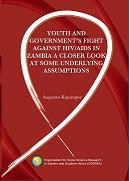
Abstract:
Since the first case of HIV/AIDS was reported in Zambia, a number of measures and interventions have been taken. The main objective of this study was to investigate some of the assumptions underlying Zambia’s response to the HIV/AIDS epidemic. Using both purposive and random sampling, data was collected from 864 consenting students in twelve secondary schools in four provinces of Zambia. The main conclusion emerging from the study findings is that, notwithstanding the widespread awareness on HIV/AIDS and VCT facilities, the youth in Zambia continue to be at high risk of HIV infection. This is because of their false sense of invulnerability that can be attributed to, among others, their inadequate knowledge about HIV/AIDS that is exacerbated by the fact that individuals and institutions that are cardinal in shaping their behaviour and attitudes seem to have taken the back seat. The consequence of this has been failure, not only to delay sexual activity but also to adopt preventive behaviour necessary to protect themselves and others from HIV/AIDS. These findings clearly suggest that some of the assumptions underlying Zambia’s response to HIV/AIDS are not borne out by the reality on the ground. Based on the findings, a number of recommendations are made. These include the need to (a) increase knowledge about HIV/AIDS and awareness about the availability of ARVs, (b) investigate contextual issues inhibiting delayed sexual debut and acceptance of secondary abstinence and adoption of protective sex practices, (c) investigate possible obstacles inhibiting optimal utilization of reliable and effective institutions for STI treatment, (d) aggressively address issues of stigma and discrimination. In all the above, the need to find innovative ways to involve significant adults in the design and implementation of HIV and AIDS programmes that target the youth is strongly recommended.